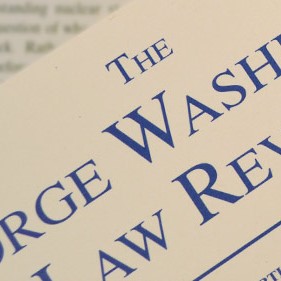Jason Webb Yackee & Susan Webb Yackee · July 2012
80 GEO. WASH. L. REV. 1414 (2012)
Federal agencies promulgate hundreds of regulations per year, and rules made by agencies greatly affect the structure and quality of our lives, perhaps even more so than the laws made by Congress. Given this reality, administrative law scholarship has long focused on the importance of the informal rulemaking process, which is governed by the notice and comment procedures set forth in § 553 of the Administrative Procedure Act (“APA”). Rulemaking through notice and comment was once believed to be both effective and efficient; however, for the past two decades, administrative law scholars have argued that rulemaking is so overburdened by outside constraints that it is effectively “ossified.” Since the mid-1970s, Congress, the White House, and especially the courts have competed in a zero-sum “oversight” game, in which each of the three branches aggressively has sought to impose its own conception of good regulation. As a result, agencies are unable to promulgate necessary rules within a reasonable time period, and they often seek ways to avoid rulemaking altogether. This undesirable, ossified state of affairs yields a mismatch between the regulations produced and those that would advance the public interest. Prominent administrative law scholars have widely embraced the ossification thesis, but as of yet it has not been subjected to serious empirical testing. This is important because drastic reforms with far-reaching consequences have been proposed on the assumption that ossification is both real and problematic.
This Article challenges the ossification literature and tests four key hypotheses of the ossification thesis. It analyzes notice and comment rulemaking at the Department of the Interior from 1950 through 1990 by using a comparative- statics approach to examine success rates of proposed rules. Extrapolating from this data, evidence that ossification generally is either a serious or widespread problem is mixed at best, and appears relatively weak overall. Even in the allegedly ossified era, federal agencies remain able to propose and promulgate historically large numbers of regulations, and to do so relatively quickly.

